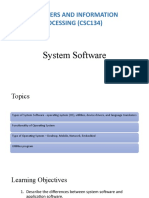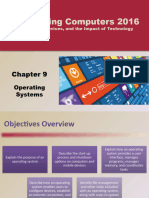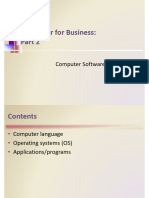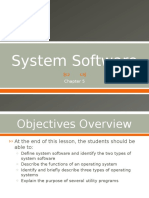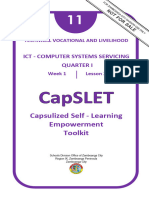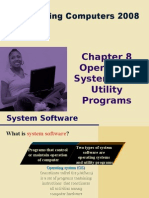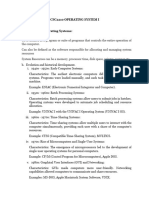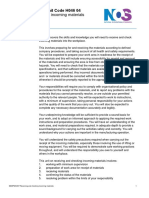0% found this document useful (0 votes)
74 views34 pagesIntroduction to Operating Systems
The document defines operating systems and describes their core functions, including starting up and shutting down devices, providing user interfaces, managing programs and memory, coordinating tasks, and enabling users to configure devices, connect to networks, and monitor performance. It also discusses different types of operating systems like desktop, mobile, server, and embedded operating systems, providing examples and features of common systems like Windows, MacOS, Linux, and UNIX.
Uploaded by
JaphaCopyright
© © All Rights Reserved
We take content rights seriously. If you suspect this is your content, claim it here.
Available Formats
Download as PPTX, PDF, TXT or read online on Scribd
0% found this document useful (0 votes)
74 views34 pagesIntroduction to Operating Systems
The document defines operating systems and describes their core functions, including starting up and shutting down devices, providing user interfaces, managing programs and memory, coordinating tasks, and enabling users to configure devices, connect to networks, and monitor performance. It also discusses different types of operating systems like desktop, mobile, server, and embedded operating systems, providing examples and features of common systems like Windows, MacOS, Linux, and UNIX.
Uploaded by
JaphaCopyright
© © All Rights Reserved
We take content rights seriously. If you suspect this is your content, claim it here.
Available Formats
Download as PPTX, PDF, TXT or read online on Scribd
/ 34







